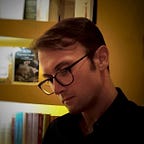In 1965, my father, Frederick Hart, worked at the Gayety Theater in Washington, D.C., a famous burlesque theater. As a struggling artist, at the age of twenty-two, he performed fire tricks on stage. And then, while performing a fire-eating trick, my father burned his mouth severely. He later made a full recovery, but the frightening incident convinced him to quit the job, and put behind him once and for all his days as a professional “human volcano.”
It is easy to see why the daredevil illusionist, Harry Houdini, once said, “Fire has always been and, seemingly, will always remain, the most terrible of the elements.”
In his book, Miracle Mongers and Their Methods: A Complete Exposé of the Modus Operandi of Fire Eaters, Heat Resisters, Poison Eaters, Venomous Reptile Defiers, Sword Swallowers, Human Ostriches, Strong Men, etc., Houdini speculates on the origins of fire tricks: “Some of the secrets of heat resistance as practiced by the dime-museum and sideshow performers of our time, secrets grouped under the general title of ‘Fire-eating,’ must have been known in very early times.”
For instance, in the era of the Roman Republic, Eunus was a rebel leader, in the mold of Spartacus, who employed a fire-breathing trick as an oratorical device. Houdini cites a passage from an 1817 History of Inventions:
“The deception of breathing out flames, which at present excites, in a particular manner, the astonishment of the ignorant, is very ancient. When the slaves in Sicily, about a century and a half before our era, made a formidable insurrection, and avenged themselves in a cruel manner, for the severities which they had suffered, there was amongst them a Syrian named Eunus — a man of great craft and courage; who having passed through many scenes of life, had become acquainted with a variety of arts. He pretended to have immediate communication with the gods; was the oracle and leader of his fellow-slaves; and, as is usual on such occasions confirmed his divine mission by miracles. When heated by enthusiasm and desirous of inspiring his followers with courage, he breathed flames or sparks among them from his mouth while he was addressing them.”
Of the “public fire-eater” as paid performer, the earliest mention Houdini could find appears in the correspondence of a Sir Henry Watton of England. In 1633, Watton writes of a man “like some swabber of a ship, come from the Indies, where he has learned to eat fire as familiarly as ever I saw any eat cakes, even whole glowing brands, which he will crush with his teeth and swallow.”
Two centuries later, an African-American fire-eater, Carlo Alberto, was one of the most widely known entertainers in the English-speaking world. Styling himself “The Wizard of the South,” or “The Great African Wonder, the Fire King,” Alberto sang while performing fire tricks for audiences in Boston, New York, Philadelphia, and London.
Similar performances became an integral part of the typical twentieth-century sideshow. In a fire-breathing act, one of the most dangerous of all sideshow fire tricks, a fire-breather sips fuel, and then spits it at a torch, throwing a great ball of fire to dramatic effect. Well into the 1960s, one fire-breather was still performing as “Diablo the Human Volcano.”
To execute without injury, fire tricks require a great deal of skill, as well as courage. Even when a performer is being as careful as possible, the simplest stunt can go horribly wrong.
Among all the acts with which Houdini was familiar — from sword-swallowing to rope escapes, from torture box illusions to knife-throwing stunts — it is no wonder why Houdini considered fire tricks to be among the most dangerous acts a performer could attempt.
It is no wonder why Houdini also presumed them to be among the oldest. To our early human ancestors, fire was an object of constant attention; to them, it was immensely useful, but it was also plainly dangerous. Fire was full of mystery. As Houdini put it: “while earth and air and water were always in evidence, fire came and went in a manner which must have been quite unaccountable to them.”
Houdini connects this sense of mystery to the various forms of “fire-worship” once practiced in ancient civilizations, and to the development of a culture of tending the “Eternal Lamp” of home, a notion shown to have inspired the devotion of peoples as diverse as Romans, Egyptians, Persians, and Mayans.
“There is a theory,” Houdini adds, “that all architecture, public and private, sacred and profane, began with the erection of sheds to protect the sacred fire. Another theory holds that the keepers of the sacred fires were the first public servants, and that from this small beginning sprang the intricate public service of the present.”
